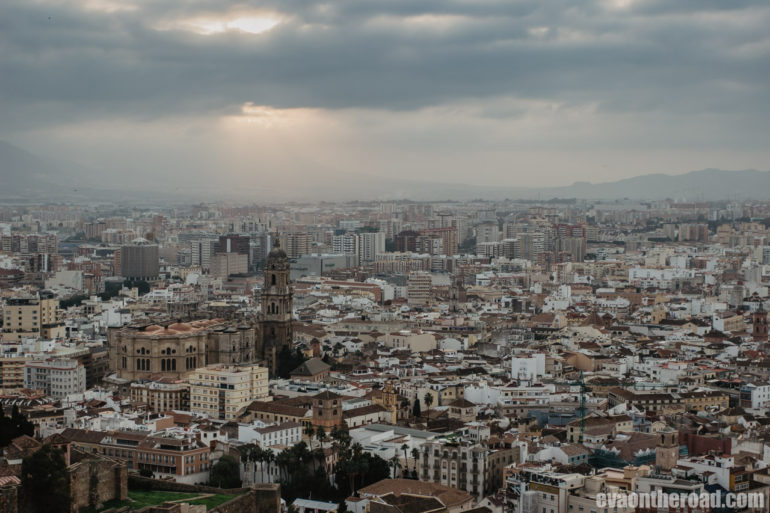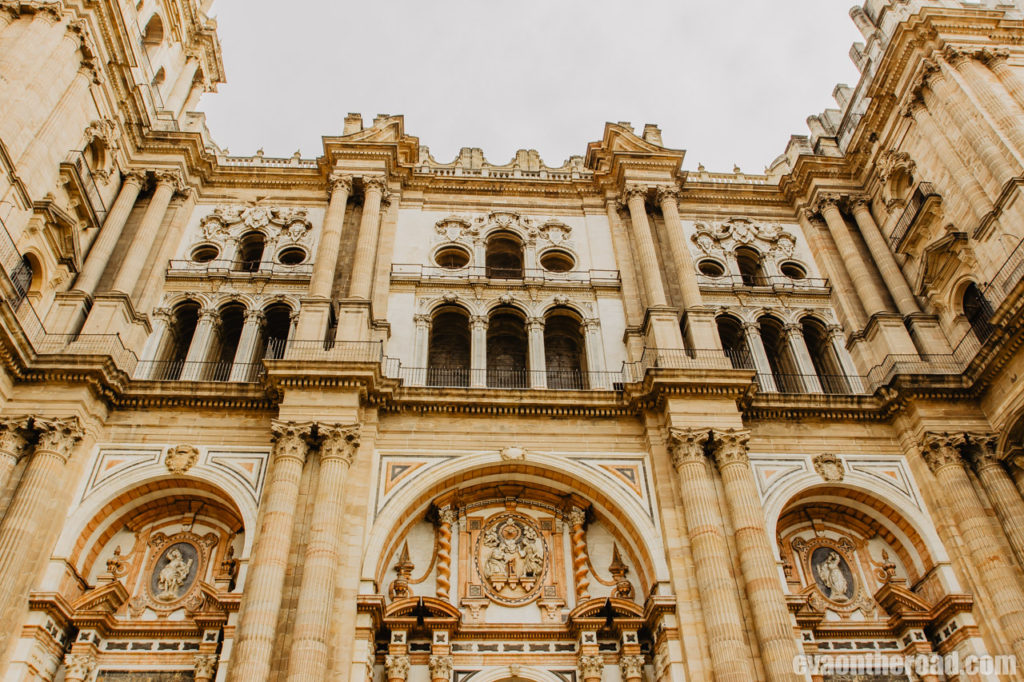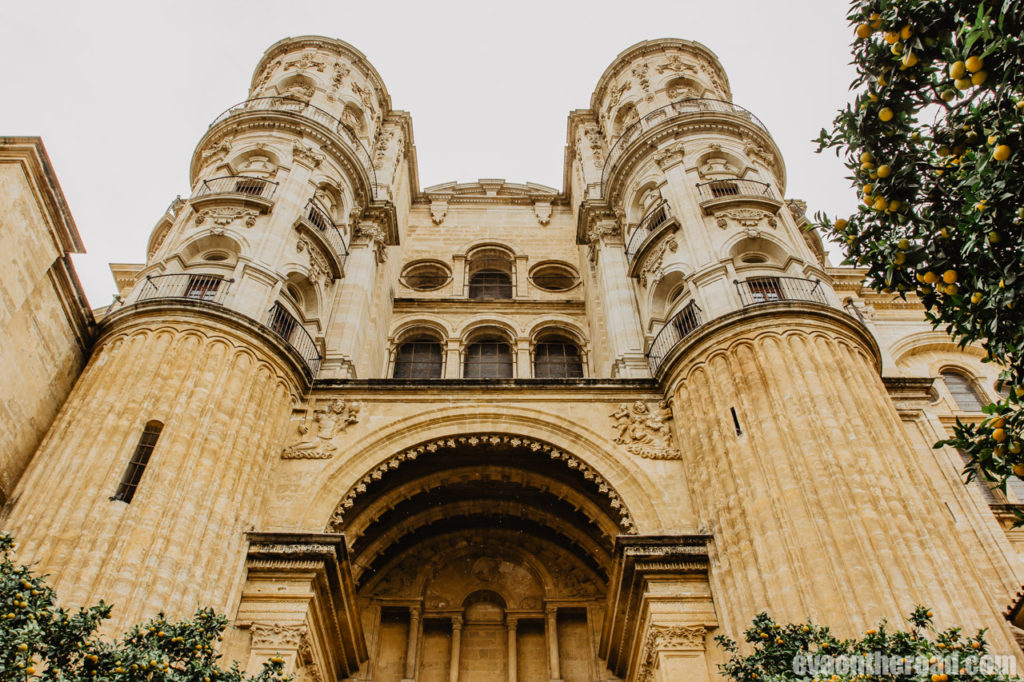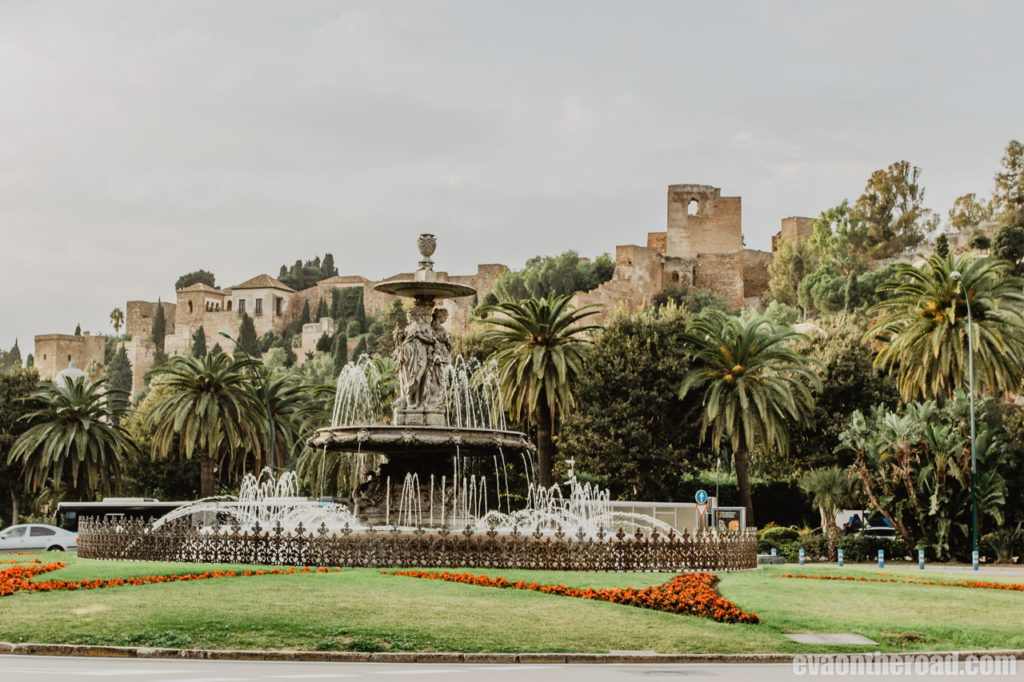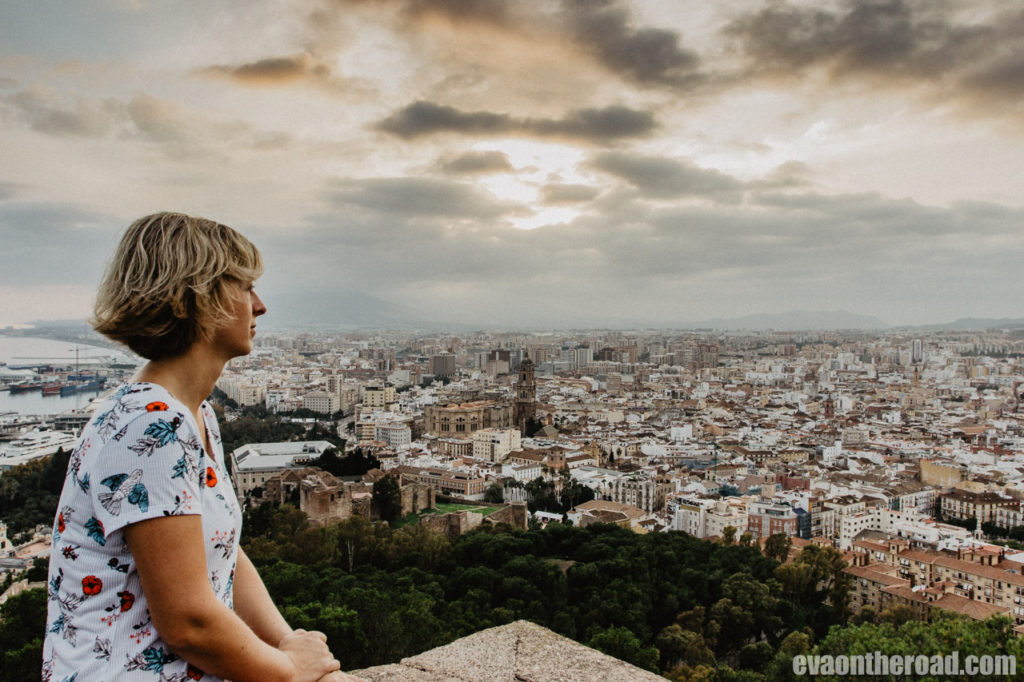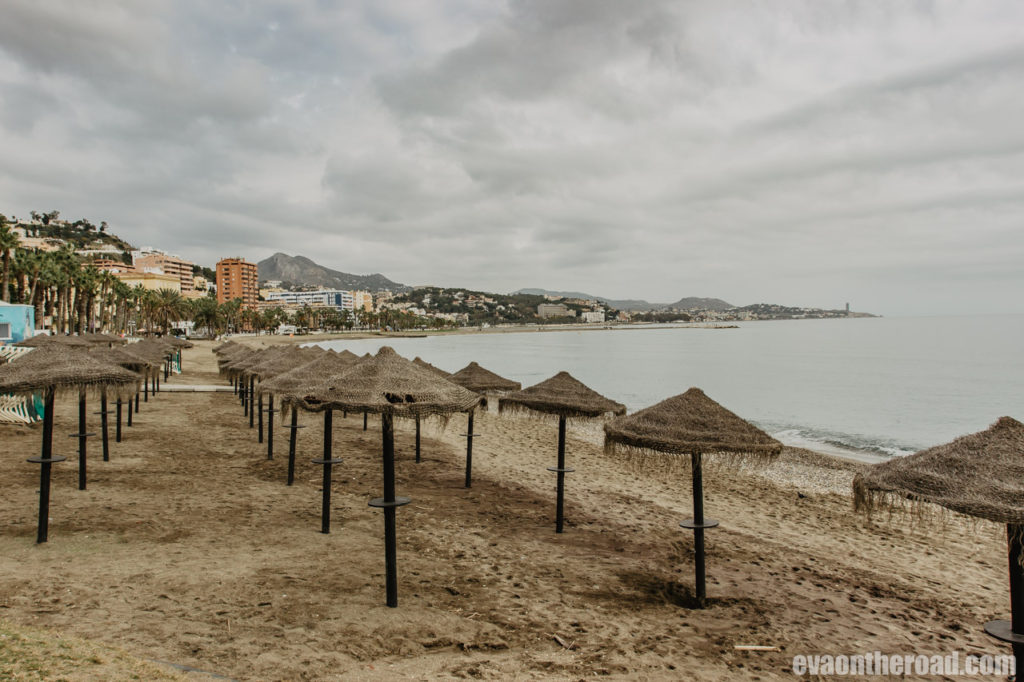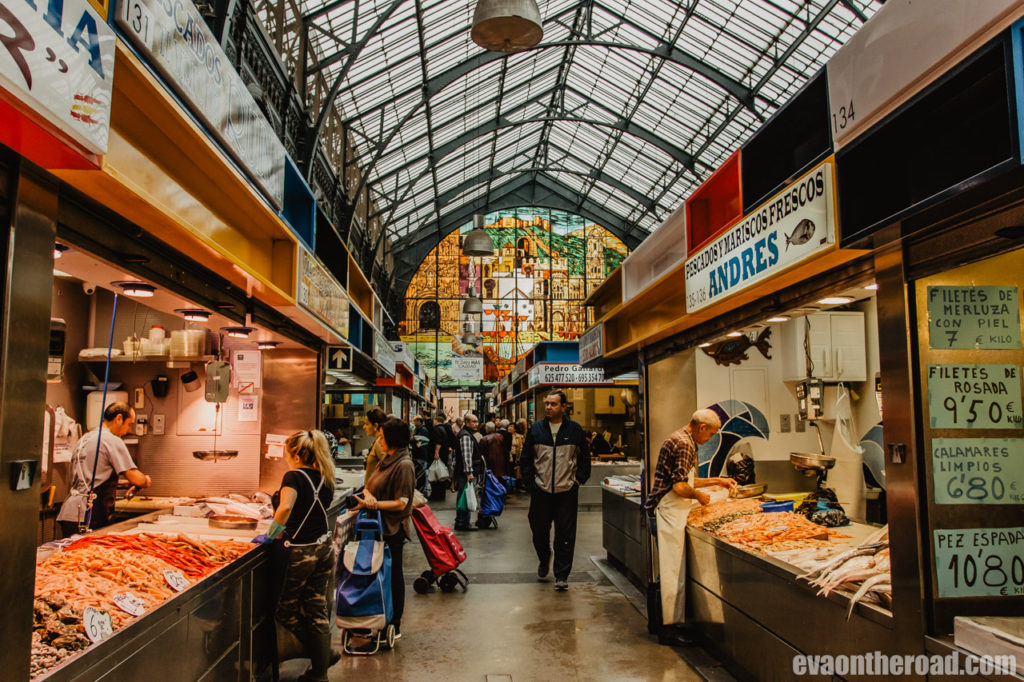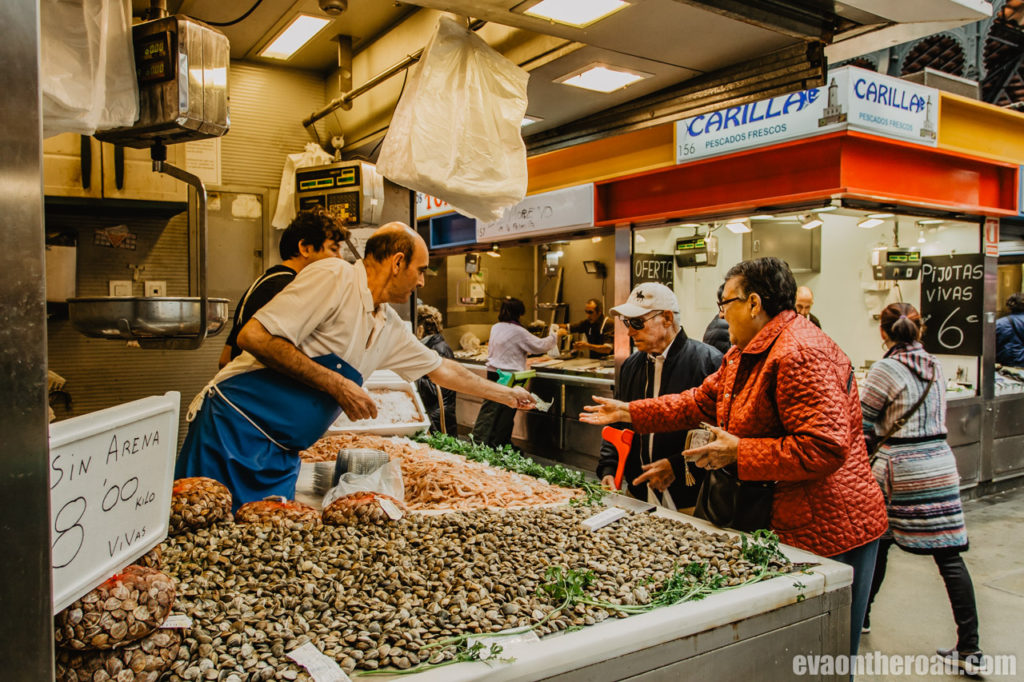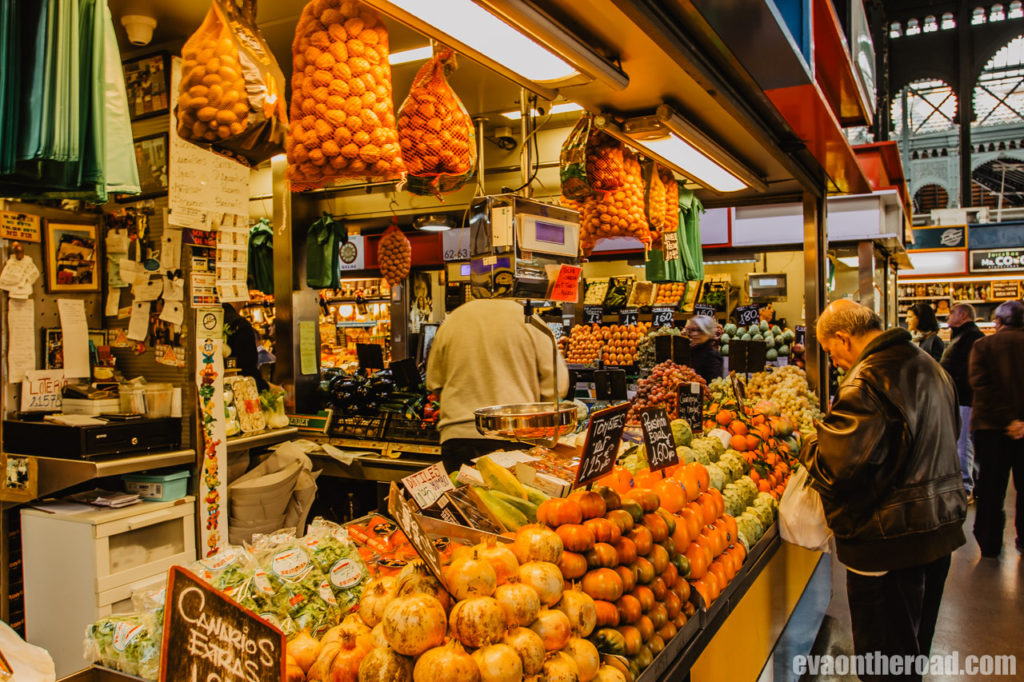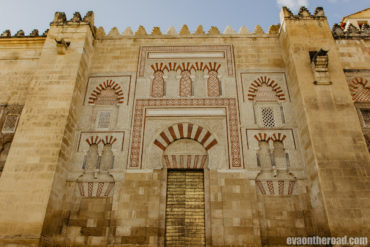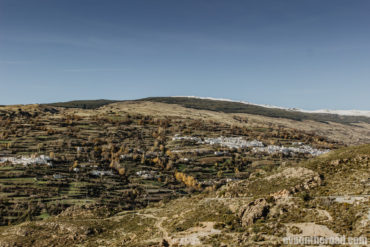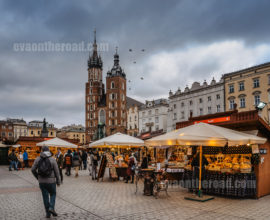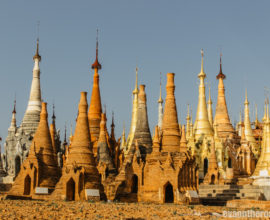Málaga – sunny city of two famous natives
Málaga is a Mediterranean seaport on the famous Costa del Sol, where the temperature rarely drops below 15 degrees. It is a tangle of picturesque streets, as well as wide boulevards full of tapas bars, the daily hustle and bustle of locals lively discussing over a glass of wine often until dawn, impressive sights, important museums, stunning panoramas and a bustling historical market. In addition, the sea and beaches are near the centre. But Málaga is much more. Haven´t you been there yet? Take a trip with me then.
Obsah článku
Málaga is located on the western coast of the Mediterranean and is hidden in the shadows of the Sierra de Mijas and Montes de Málaga. Therefore, temperatures are high in summer and winters are mild, ideal for hiking. Until the 15th century, Málaga was under the rule of the Moors and later, it became one of the major trade centres of Spain. The glorious past of the city has influenced its historical appearance, although nowadays the character of Málaga and the whole Costa del Sol is changing every day. The entire province of Málaga today benefits mainly from mass tourism.
What you shouldn’t miss
The title of the article indicates that Málaga has two famous natives. One of them is a brilliant painter Pablo Picasso. This world-famous artist was born in 1881 in Casa Natal de Picasso in the Plaza de la Merced, which houses a museum today. However, he lived here only until he was 10 years old. Except for Picasso’s birthplace, be sure to visit his museum near the cathedral. The Museo Picasso Málaga (Calle San Agustín) was only opened in 2003 and you will be able to admire over 200 Picasso paintings in a two-story building. The museum has two parts – a permanent exhibition with Picasso’s works and a temporary exhibition of other artists. Admission: you will pay EUR 8 for a permanent exhibition, EUR 6.50 for a temporary exhibition and EUR 12 for a combined ticket to all parts, there are discounts for students and seniors. The price of the ticket also includes an audio guide in various languages. We had a combined ticket and spent the whole morning in the museum. It is open from 10 am to 7 pm, in winter till 6 pm.
The impressive Catedral de la Encarnación is located just a few meters from the Picasso Museum. The site of this 16th-century cathedral used to be a mosque. The cathedral had been built for 250 years and is a mixture of Baroque and Renaissance. The original design of the cathedral was so spectacular that it was not possible to make it, so several architects took turns building the cathedral over the years. When you see the cathedral, you will know exactly why the construction took so long. 40 meters high vaulted ceiling, 15 chapels and a huge cedar wood crust. These are just the main gems of the cathedral. I also must not forget the beautiful bell tower that you can climb up. Originally there were supposed to be two bell towers, but the construction was so expensive that one of them remained unfinished. That’s why the cathedral is nicknamed La Manquita (one-handed lady). In front of the cathedral you can admire a small courtyard with orange trees (Patio de los Naranjos). As part of your tour, you can climb the bell tower to the cathedral roof and view Málaga from above. Admission: EUR 6 to the cathedral, EUR 6 to the roof or a combined ticket for EUR 10; we were here on Saturday morning when there was a mass, so we had a free entrance to the cathedral. The cathedral is open from 10 am to 8 pm (in winter to 6.30 pm), tours to the roof are always at 11.00 am, but opening hours vary according to the season.
The Malacca Castle of Alcazaba and the Teatro Romano Amphitheater are also located in the historic centre of the city, after a slight ascent from Plaza de la Andulana. The palace fortress is mostly from the 11th century. Around the Alcazaba, double walls and defensive towers were built as part of the city walls, but they are not there anymore. The meandering path leads through the main gate into Arabian gardens with lush exotic vegetation. Entrance fee: EUR 3.50
If you have enough energy, climb up the Gibralfaro hill and enjoy a beautiful view from the old Moorish fortress of Castillo de Gibralfaro. The fortress must have been huge, today you will rather walk through galleries of the former fortifications, but you will be able to admire the renovated fort towers. You will not regret the demanding hike. From any other place in Málaga you will not have such beautiful view of ships across the Mediterranean, a bullring, cathedral and nearby mountains. Admission: EUR 3.50, in winter they close at 6 p.m., so allow enough time.
When you no longer enjoy the sights
Most tourists come here not only to Málaga but also to the whole Costa del Sol for the sea and beaches. Málaga has its own wide city beach that stretches for several kilometres. There is a beautiful stroll through harbour and promenade surrounded by palm trees, which takes you from the city centre to Playa de la Malagueta beach in 15 minutes. There are plenty of restaurants on the promenade and close to the beach where you can taste local specialties. Other beaches (Playa de la Caleta, Playa del Palo) are further away, but can be reached from the Paseo del Parque by bus. Watch out for your belongings on the beaches. Otherwise, as my boyfriend did, you will chase a camera thief who threw our camera on the ground later on while hunting.
For all lovers of night life Málaga will be a paradise. The city is full of bars and restaurants which live all the night through. The heart of nightlife is Plaza de la Constitucion and its surroundings or Plaza de la Merced. There’s no point in going to bed before midnight, because you won’t fall asleep anyway. If you are not a devotee of the night rampage, be sure to have earplugs. Málaga is also known for its flamenco scene. Many spots organize evenings with local dancers and musicians. You will meet a lot of “chasers” on the streets who will recommend you to visit some of them.
What to taste
No trip can be complete without some local specialties. Have breakfast in the Plaza de la Constitución, where there are plenty of cafes and bakeries. You can choose from baguettes filled with jamon, cheese or just vegetables, toasts, cakes and other unhealthy white bread. Then head to the historic Mercado Central de Atarazanas (Calle Ataranzas) to see what the locals eat and buy. You can find everything from exotic fruits, vegetables, fish, meat, cheese, to other local specialty – almonds (fresh or roasted or coated in honey) and various kinds of dried fruits. Finish the day in a maze of old narrow streets and taste local fish (mostly sardines or anchovies) and seafood fried in olive oil briefly in one of the restaurants. Around the beach, fish will be grilled for you in an open fire and sprinkled with coarse sea salt. We were in the Marquesería Casa Vicente restaurant near the market and tasted chopitos (calamari) for EUR 8 and boquerones (anchovies) for EUR 9,50. The price also included a small salad and bread. The spot is probably very popular, because in a short moment it was full even with a queue for tables.
How to get there and how to get around the city
There are two direct flights from Prague to Malaga – Smartwings and Ryanair. Tickets can be obtained from 1.500 CZK. From the airport, you can get to the city either by Express Aeropuerto (line 75) in about 20-25 minutes, ticket price of EUR 3 (Paseo del Parque is the final bus stop), or by C1 line train in 15 min and a EUR 1.80 ticket (Centro Alameda final stop). The train stops at only 4 stations, so this is the better option. The train also runs from the airport along the coast through the town of Torremolinos up to Fuengirola.
Finally, I owe you the name of the second famous native. It is no one else but handsome Antonio Banderas, after whom the promenade is named. Of course, there is much more to discover and admire in Malaga, so pack your bags quickly and head out.
Cordoba is located in the very heart of Andalusia on the banks of the Guadalquivir River. Its history dates back to the years of BC, since the 7th century AD it had been the capital ...
Read MoreSurprisingly, the Sierra Nevada massif rises in hot Andalusia, not far from the famous city of Granada and barely an hour's drive from the crowded Costa del Sol coast. With its peaks exceeding 3,000 m, ...
Read More
